3-D Multi-Component Reverse Time Migration Method for Tunnel Seismic Data
Abstract
1. Introduction
2. 3-D RTM Imaging
2.1. Image-Forming Principle
- Forward continuation: the wavelet is used as the excitation source, the forward simulation calculates the maximum time and a snapshot of the wavefield each time is saved;
- Reverse continuation: the three-component wavefield is used as the excitation source, and the reverse continuation calculation is carried out from the maximum time to zero time. The forward continuation wavefield as the corresponding time is extracted for the multiplication operation. The calculation results at all times are stacked;
- Imaging: RTM imaging of all single-shot data is completed according to the process in steps (1) and (2). Then, a Laplace filter is used to remove the low-frequency noise, and the migration imaging results are obtained.
2.2. Forward Modeling
3. Numerical Simulation
3.1. Wave Field Analysis
3.2. Migration Imaging
4. Engineering Application
5. Discussion
6. Conclusions
- Compared with the single-component migration method, the multi-component migration method can enhance the energy of the real anomalous interface;
- Compared with the Kirchhoff migration method, the RTM method can make full use of multiple waves to realize migration imaging, which will improve the resolution of the anomalous interfaces in front of the tunnel face;
- The RTM method can effectively overcome the problems of small offset and expand the range of migration imaging;
- Compared with single-component RTM, multi-component RTM can make full use of limited data to realize multi-component migration imaging, enhance the energy of anomalous interface and improve the resolution.
Author Contributions
Funding
Institutional Review Board Statement
Informed Consent Statement
Data Availability Statement
Conflicts of Interest
References
- Andisheh, A.; Ali, M.; Reza, N.; Mojtaba, Z.S.; Afshin, E. Prediction of geological hazardous zones in front of a tunnel face using TSP-203 and artificial neural networks. Tunn. Undergr. Space Technol. 2008, 23, 711–717. [Google Scholar]
- Shi, S.S.; Li, S.C.; Li, L.P.; Zhou, Z.Q.; Wang, J. Advance optimized classification and application of surrounding rock based on fuzzy analytic hierarchy process and Tunnel Seismic Prediction. Autom. Constr. 2014, 37, 217–222. [Google Scholar] [CrossRef]
- Ashida, Y. Seismic imaging ahead of a tunnel face with three-component geophones. Int. J. Rock Mech. Min. Sci. 2001, 38, 823–831. [Google Scholar] [CrossRef]
- Luth, S.; Buske, S.; Giese, R.; Goertz, A. Fresnel volume migration of multicomponent data. Geophysics 2005, 70, 121–129. [Google Scholar] [CrossRef]
- Lüth, S.; Giese, R.; Otto, P.; Krüger, K.; Mielitz, S.; Bohlen, T.; Dickmann, T. Seismic investigations of the Piora Basin using S-wave conversions at the tunnel face of the Piora adit (Gotthard Base Tunnel). Int. J. Rock Mech. Min. Sci. 2008, 45, 86–93. [Google Scholar] [CrossRef]
- Rechlin, A.J.; Lüth, S.; Giese, R. OnSITE: Integrated seismic imaging and interpretation for tunnel excavation. In Proceedings of the International Conference on Rock Joints and Jointed Rock Masses, Tucson, AZ, USA, 4–10 January 2009; pp. 1–7. [Google Scholar]
- Tzavaras, J.; Buske, S.; Groß, K.; Shapiro, S. Three-dimensional seismic imaging of tunnels. Int. J. Rock Mech. Min. Sci. 2012, 49, 12–20. [Google Scholar] [CrossRef]
- Bellino, A.; Garibaldi, L.; Godio, A. An automatic method for data processing of seismic in tunneling. J. Appl. Geophys. 2013, 98, 243–253. [Google Scholar] [CrossRef]
- Hu, Y.R.; McMechan, G.A. Imaging mining hazards within coalbeds using pre-stack wave equation migration of in-seam seismic survey data: A feasibility study with synthetic data. J. Appl. Geophys. 2007, 63, 24–34. [Google Scholar] [CrossRef]
- Chang, W.F.; McMechan, G.A. Reverse-time migration of offset vertical seismic profiling data using the excitation-time imaging condition. Geophysics 1986, 51, 67–84. [Google Scholar] [CrossRef]
- Mulder, W.A.; Plessix, R.E. A comparison between one-way and two-way wave equation migration. Geophysics 2004, 69, 1491–1504. [Google Scholar] [CrossRef]
- Yan, J.; Sava, P. Isotropic angle-domain elastic reverse-time migration. Geophysics 2008, 73, S229–S239. [Google Scholar] [CrossRef]
- Fletcher, R.P.; Du, X.; Fowler, P.J. Reverse time migration in tilted transversely isotropic (TTI) media. Geophysics 2009, 74, Wca179–Wca187. [Google Scholar] [CrossRef]
- Liu, Y.K.; Hu, H.; Xie, X.B.; Zheng, Y.C.; Li, P. Reverse time migration of internal multiples for subsalt imaging. Geophysics 2015, 80, S175–S185. [Google Scholar] [CrossRef]
- Silvestrov, I.; Baina, R.; Landa, E. Poststack diffraction imaging using reverse-time migration. Geophys. Prospect. 2016, 64, 129–142. [Google Scholar] [CrossRef]
- Liu, H.W.; Li, B.; Liu, H.; Tong, X.L.; Liu, Q. The algorithm of high order finite difference pre-stack reverse time migration and GPU implementation. Chin. J. Geophys. 2010, 53, 1725–1733. [Google Scholar] [CrossRef]
- Medeiros, V.; Barros, A.; Silva-Filho, A.; de Lima, M.E. High performance implementation of RTM seismic modeling on FPGAs: Architecture, arithmetic and power issues. In High-Performance Computing Using FPGAs; Springer: New York, NY, USA, 2013; pp. 305–334. [Google Scholar]
- Zha, X.J.; Gao, X.; Wang, W. Advanced prediction migration method research in tunnel engineering investigation. Chin. J. Geophys. 2018, 61, 1150–1156. (in Chinese). [Google Scholar]
- Gu, B.L.; Li, Z.Y.; Ma, X.N.; Liang, G. Multi-component elastic reverse time migration based on the P- and S-wave separated velocity-stress equations. J. Appl. Geophys. 2015, 112, 62–78. [Google Scholar] [CrossRef]
- Li, H.; Zhu, P.; Ji, G.Z.; Zhang, Q. Modified image algorithm to simulate seismic channel waves in 3D tunnel model with rugged free surfaces. Geophys. Prospect. 2016, 64, 1259–1274. [Google Scholar] [CrossRef]
- Li, B.; Liu, G.F.; Liu, H. A Method of using GPU to accelerate seismic pre-stack time migration. Chin. J. Geophys. 2009, 52, 242–249. [Google Scholar] [CrossRef]
- Buske, S.; Gutjahr, S.; Christof, S. Fresnel volume migration of single-component seismic data. Geophysics 2009, 74, WCA47–WCA55. [Google Scholar] [CrossRef]

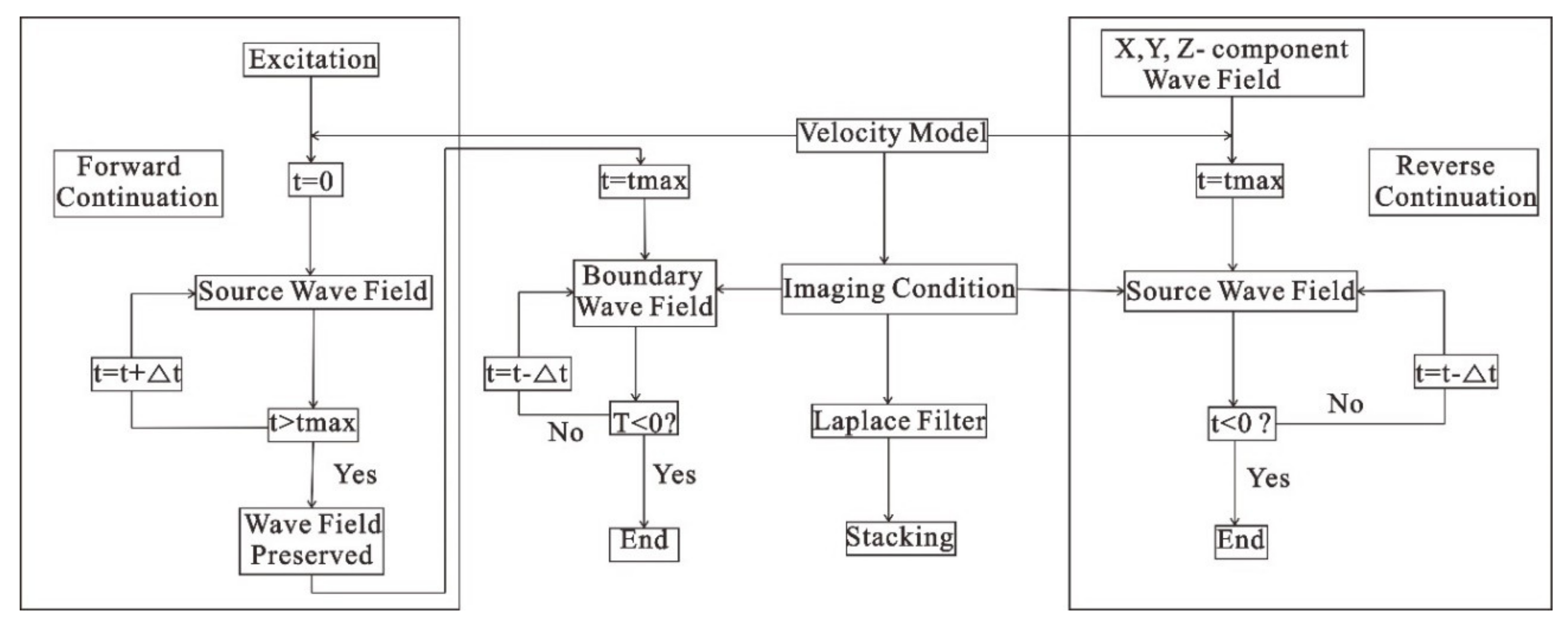
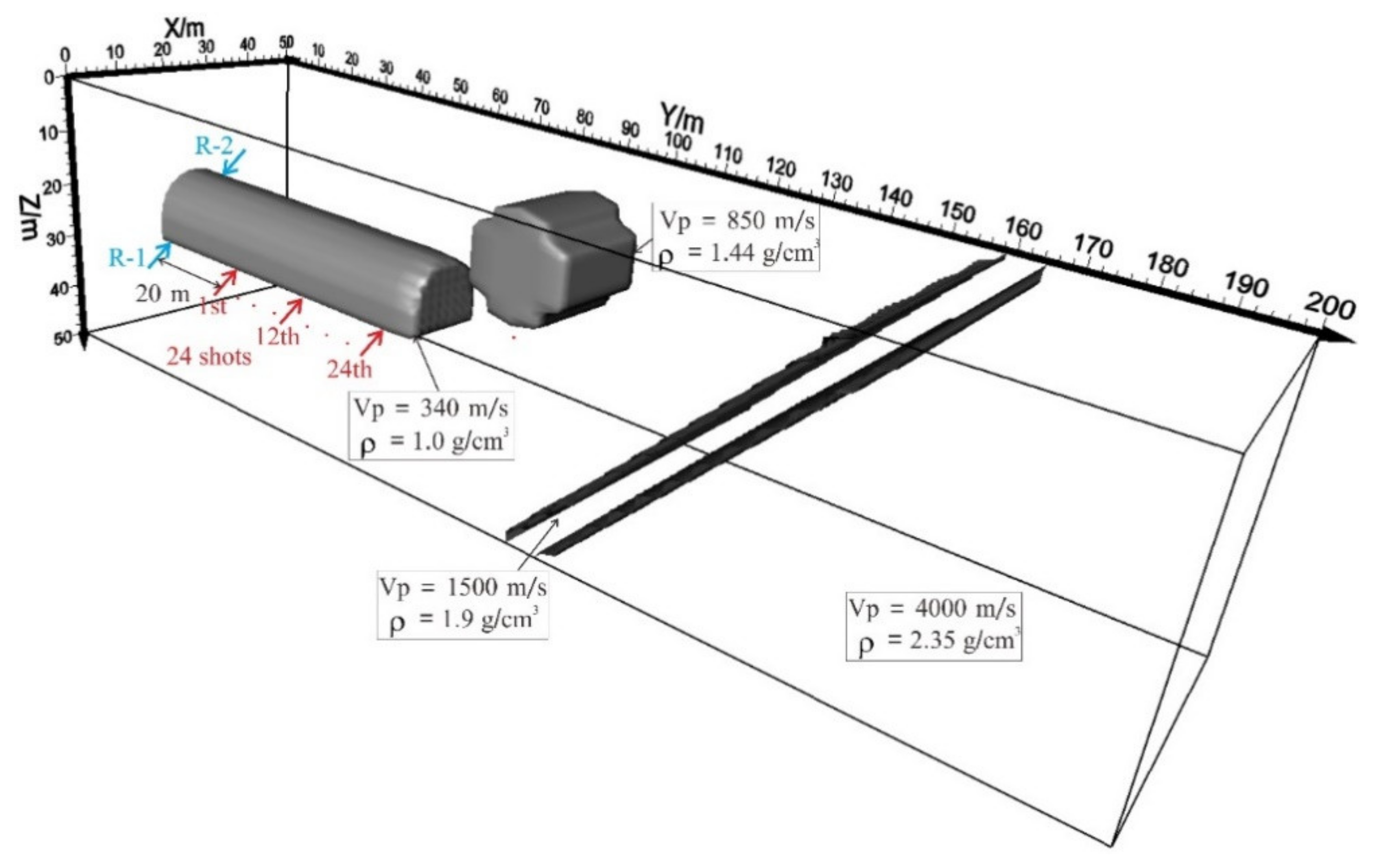

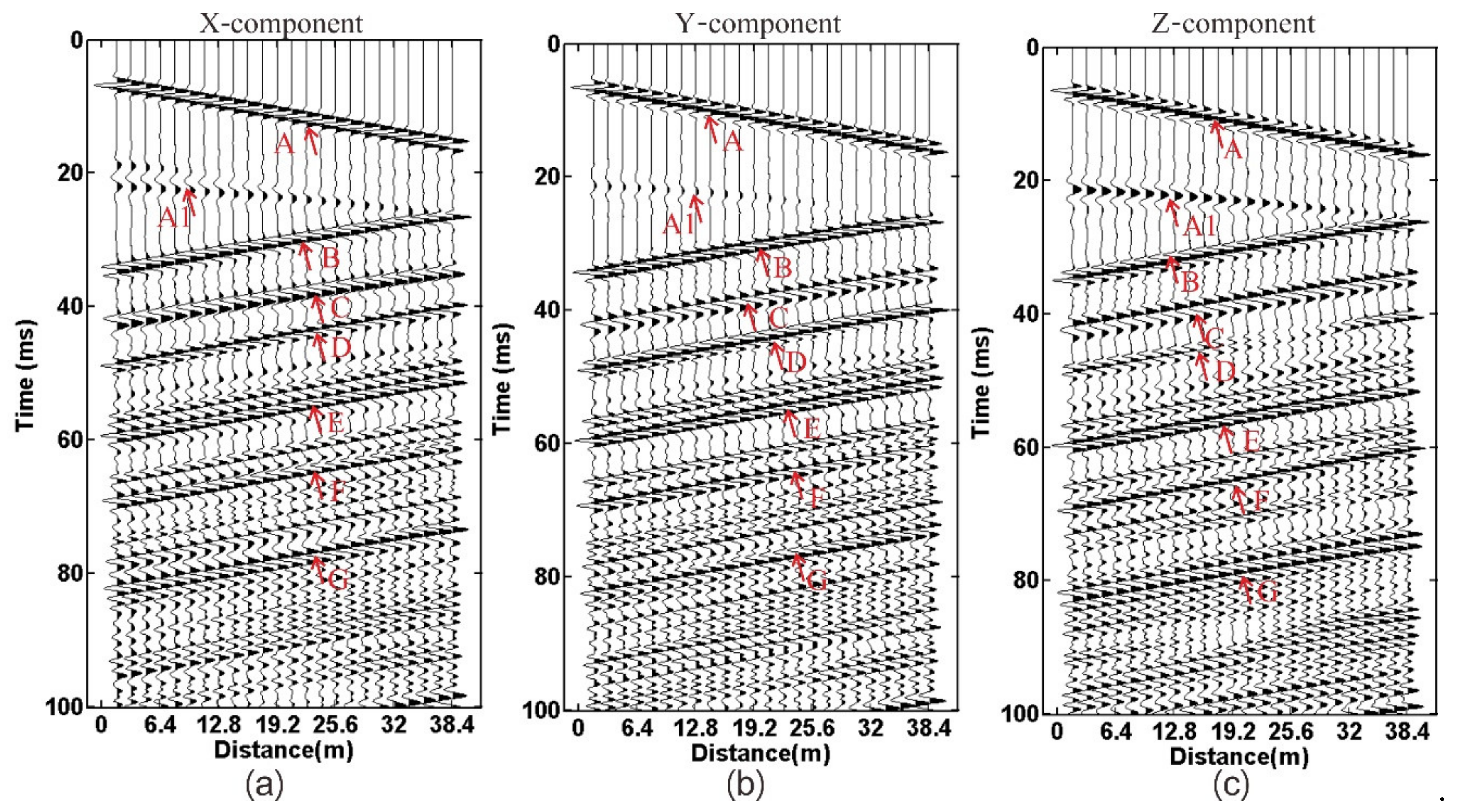
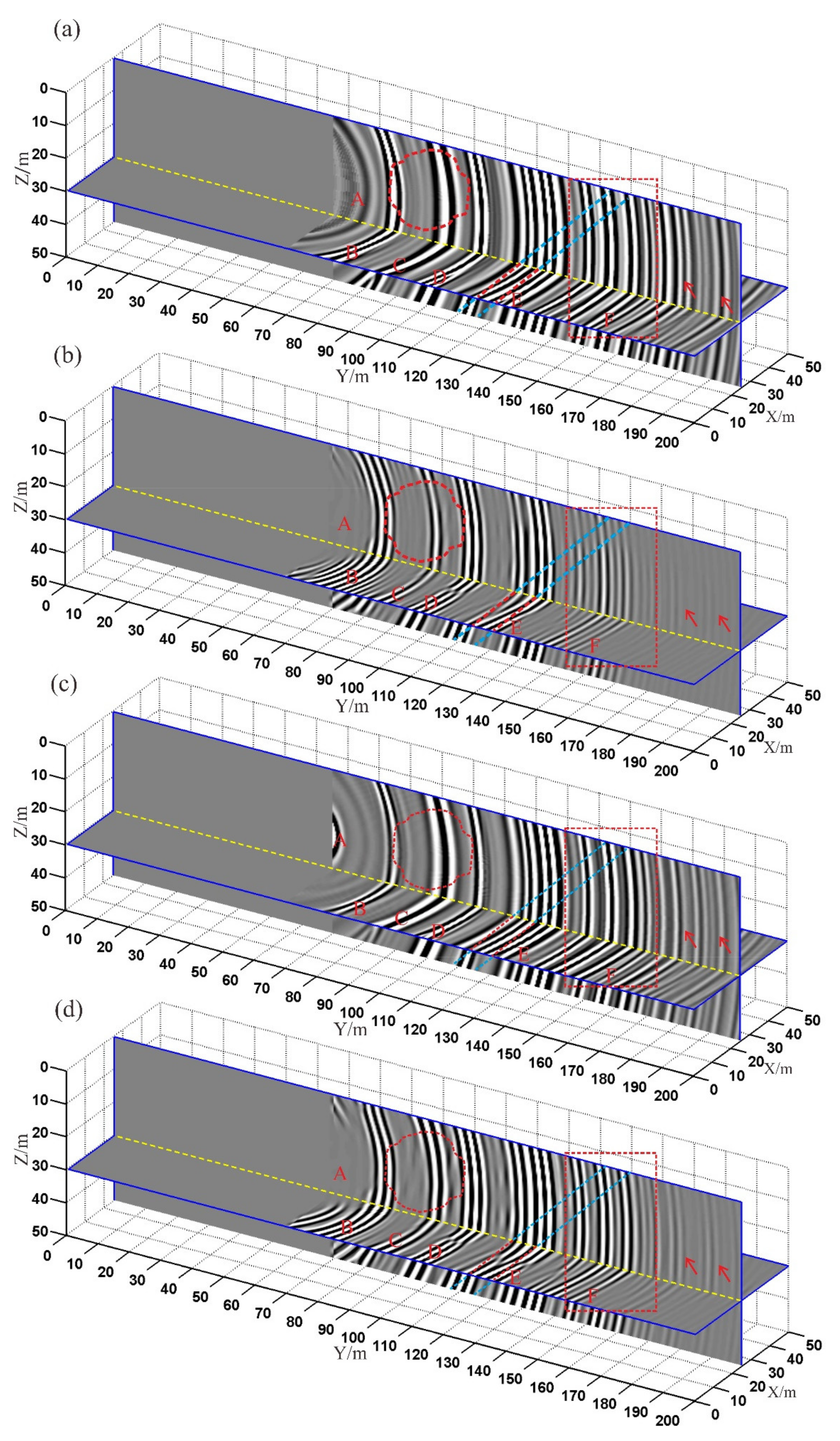
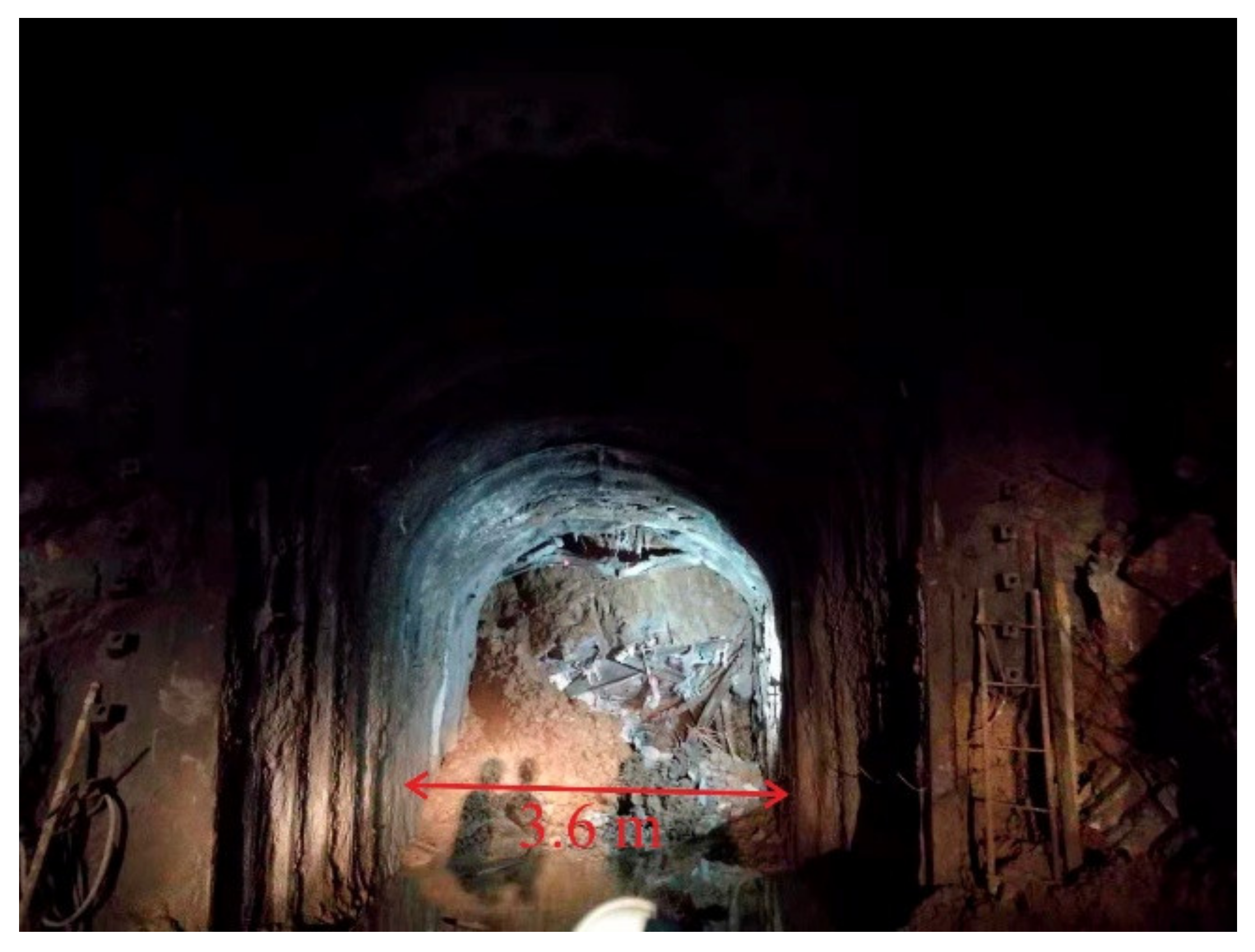
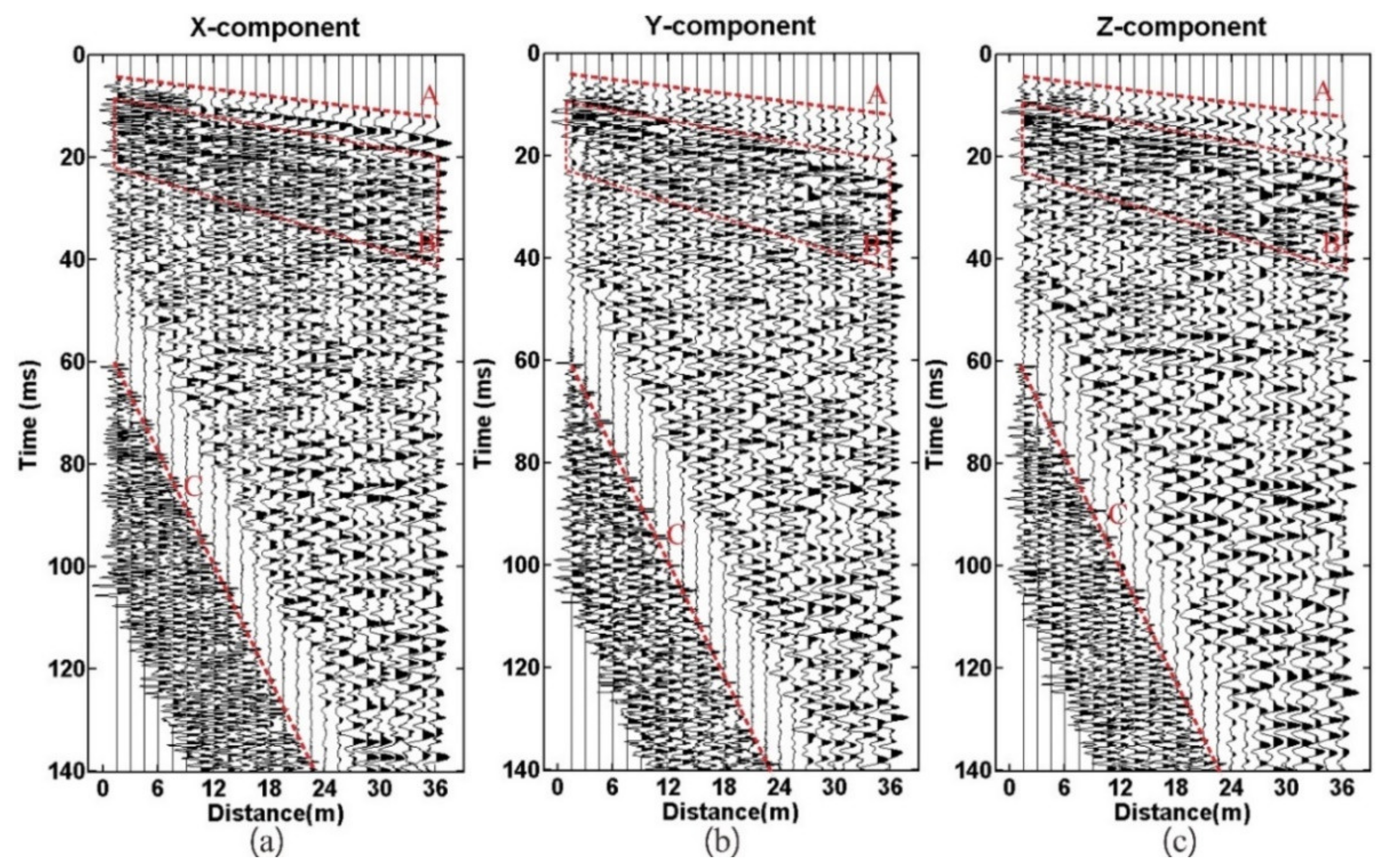

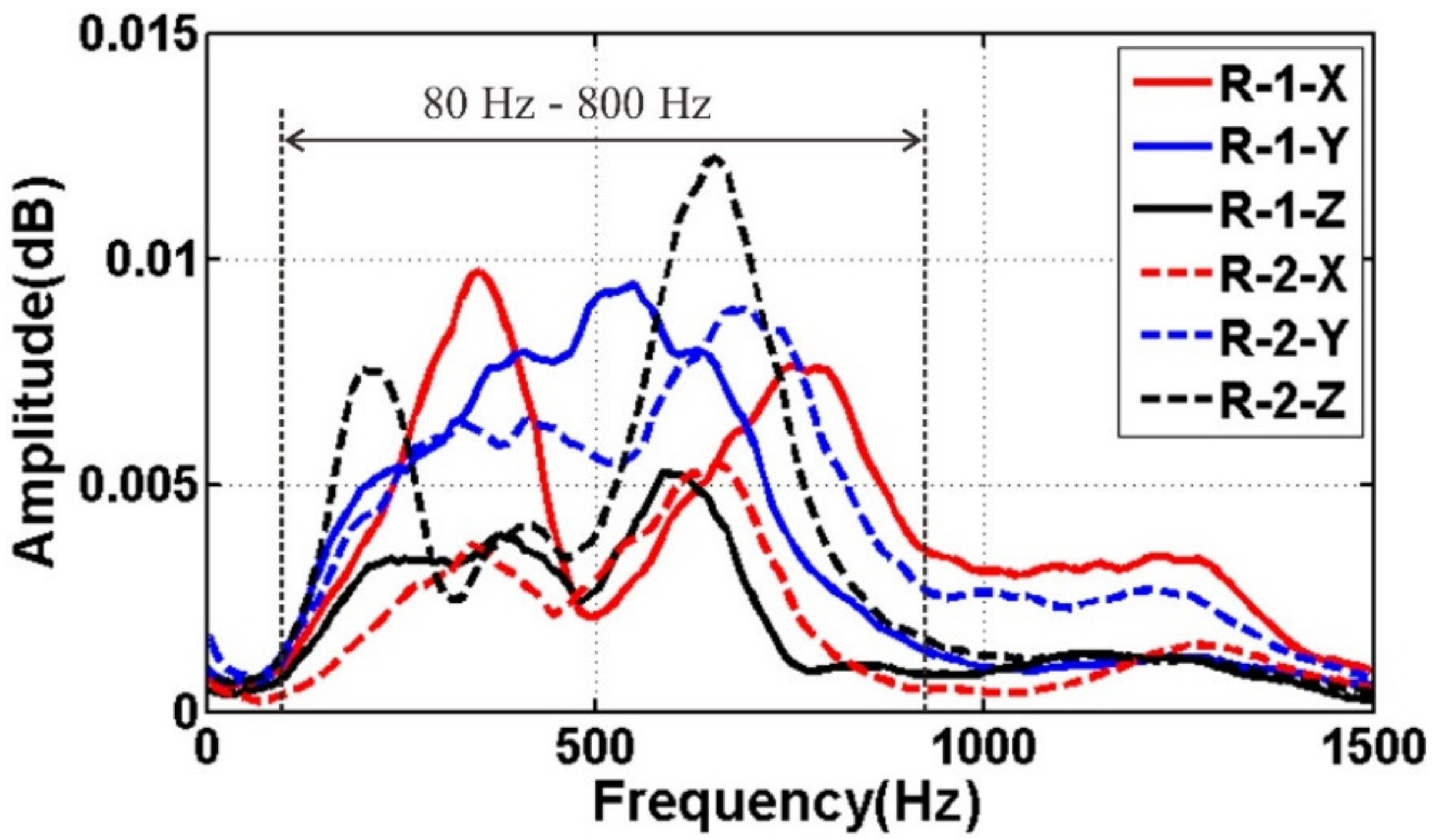
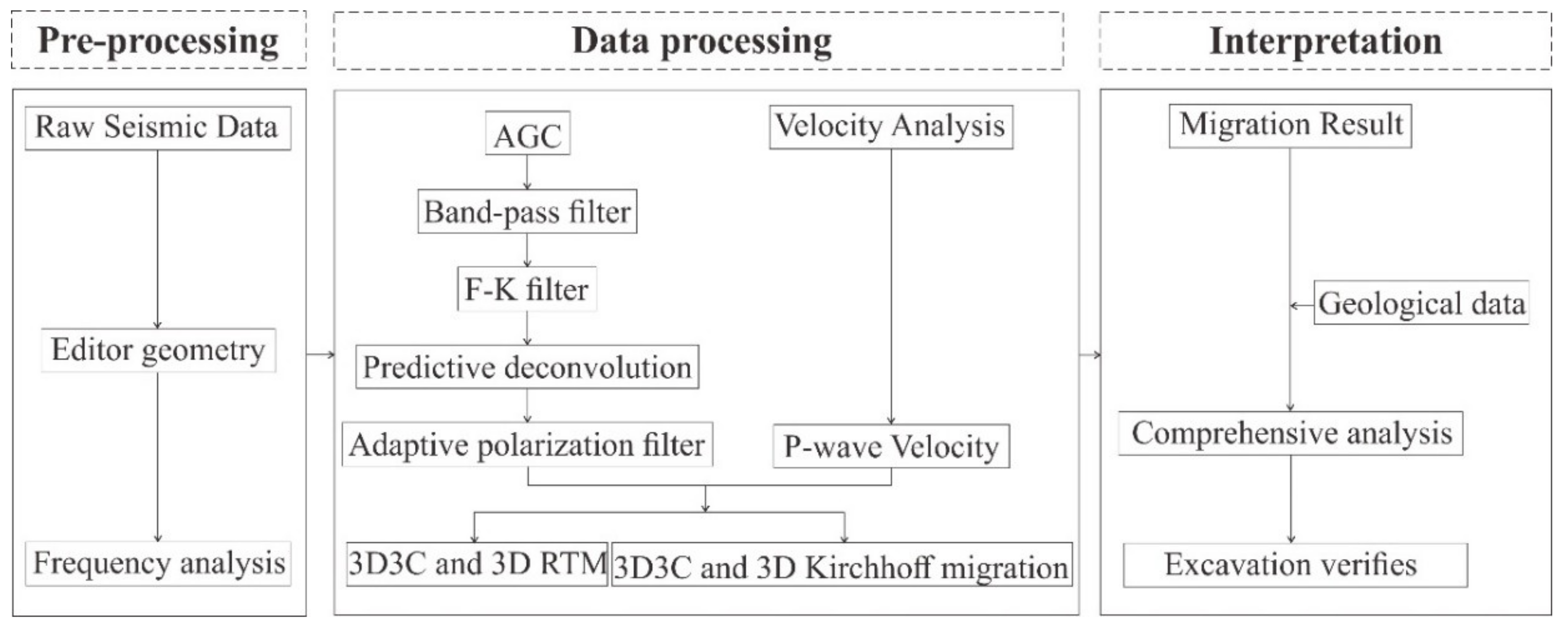

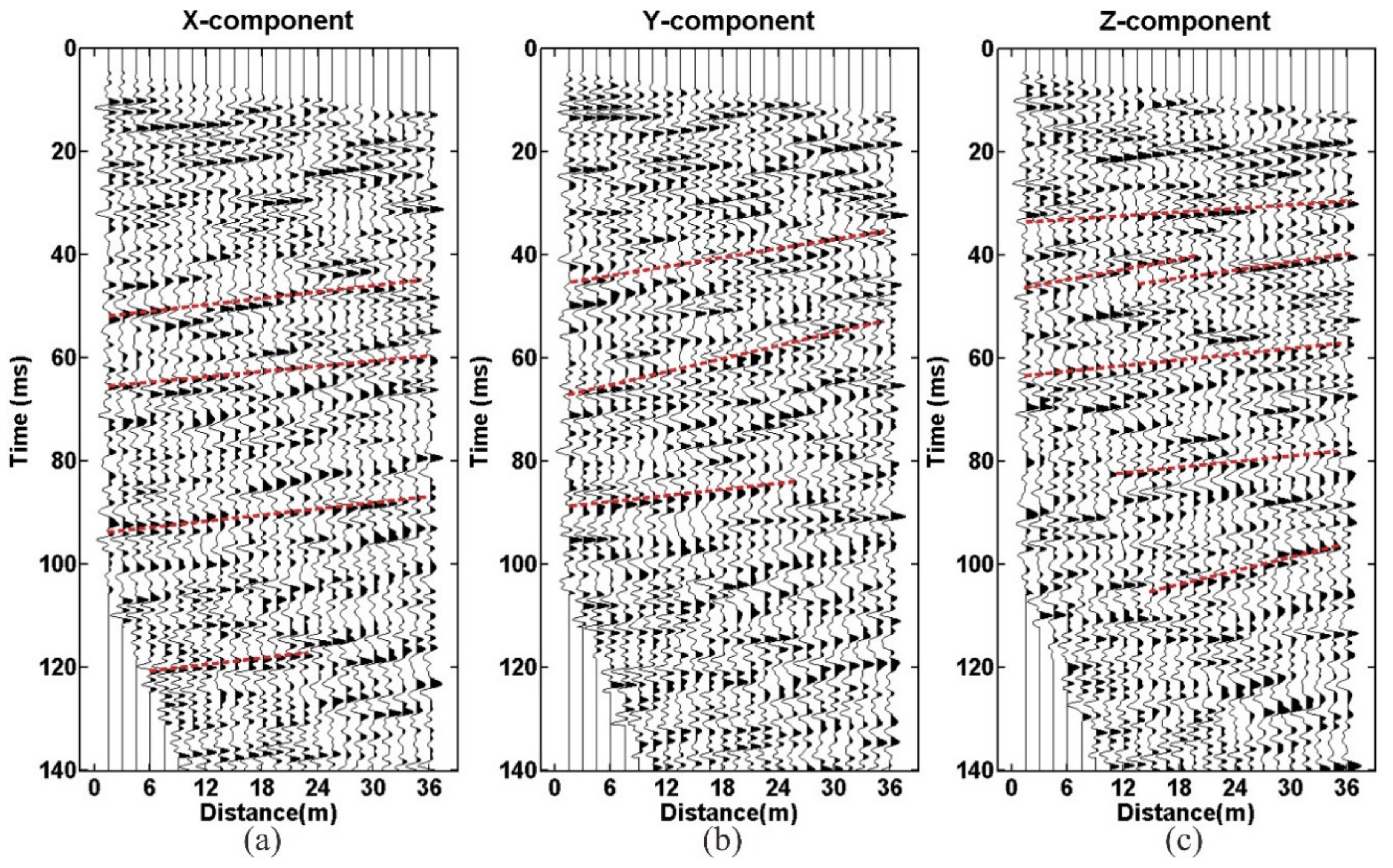
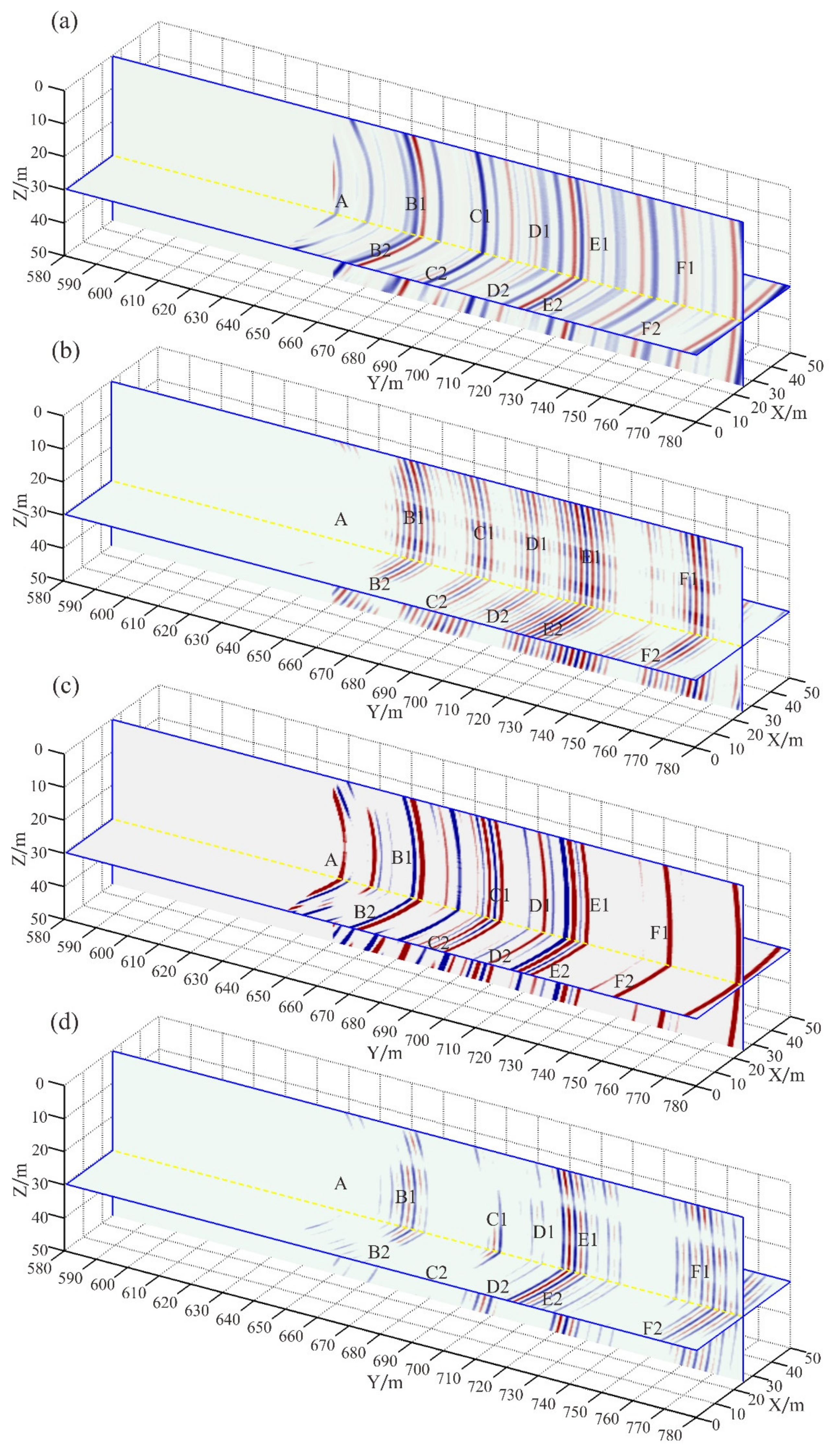

| Profile | SNR |
|---|---|
| (a) Single-component Kirchhoff migration | 169.48 |
| (b) Single-component RTM | 210.10 |
| (c) Multi-component Kirchhoff migration | 209.17 |
| (d) Multi-component RTM | 217.15 |
| Profile | SNR |
|---|---|
| (a) Single-component Kirchhoff migration | 279.10 |
| (b) Single-component RTM | 314.01 |
| (c) Multi-component Kirchhoff migration | 300.54 |
| (d) Multi-component RTM | 414.80 |
Publisher’s Note: MDPI stays neutral with regard to jurisdictional claims in published maps and institutional affiliations. |
© 2021 by the authors. Licensee MDPI, Basel, Switzerland. This article is an open access article distributed under the terms and conditions of the Creative Commons Attribution (CC BY) license (https://creativecommons.org/licenses/by/4.0/).
Share and Cite
Guan, P.; Shao, C.; Jiao, Y.; Zhang, G.; Li, B.; Zhou, J.; Huang, P. 3-D Multi-Component Reverse Time Migration Method for Tunnel Seismic Data. Sensors 2021, 21, 3244. https://doi.org/10.3390/s21093244
Guan P, Shao C, Jiao Y, Zhang G, Li B, Zhou J, Huang P. 3-D Multi-Component Reverse Time Migration Method for Tunnel Seismic Data. Sensors. 2021; 21(9):3244. https://doi.org/10.3390/s21093244
Chicago/Turabian StyleGuan, Peng, Cuifa Shao, Yuyong Jiao, Guohua Zhang, Bin Li, Jie Zhou, and Pei Huang. 2021. "3-D Multi-Component Reverse Time Migration Method for Tunnel Seismic Data" Sensors 21, no. 9: 3244. https://doi.org/10.3390/s21093244
APA StyleGuan, P., Shao, C., Jiao, Y., Zhang, G., Li, B., Zhou, J., & Huang, P. (2021). 3-D Multi-Component Reverse Time Migration Method for Tunnel Seismic Data. Sensors, 21(9), 3244. https://doi.org/10.3390/s21093244





